[VARIVAS] Ocean Record SHOCK LEADER VA-21
Our Selling Price: US$9.71 - US$17.25 [Regular Price: US$13.86 - US$24.64]
Prices vary according to options.
Retail Price: US$19.80 - US$35.20
[VARIVAS] Ocean Record Shock Leader
“Ocean Record Shock Leader” will support you with its astonishing strength when challenging any record.
This shock leader was proposed, developed, and tested in collaboration with Seichiro Tashiro, a leading authority on Yellowtail amber jack casting games.
It can be used for all kinds of fish, from casting to jigging, because the rigidness is set to an optimum level to facilitate system setup, minimize interference with the rod guide during casting, and ensure that no interference occurs with lure action.
Basic knowledge of SHOCK LEADER
What is a SHOCK LEADER?
It is an indispensable item for modern fishing styles.
A SHOCK LEADER is a line attached to the tip of the main line to make the system (rig) perform at 100%.
It is sometimes called a “leader”.
The name may vary, but it is a line that serves the same purpose as a leader line or a tippet. It is often used in combination with PE as the main line in modern fishing styles.
Role of the SHOCK LEADER.
It brings out the full potential of the PE line.
PE is sensitive because it has almost no stretch. However, this also causes a lot of hooking failures.
Also, it has the disadvantage of being weak against friction.
Therefore, a SHOCK LEADER must absorb the impact and complement the abrasion resistance.
PE, which does not transmit light, is very conspicuous in the water, so another purpose of the SHOCK LEADER is to camouflage it.
The balance between the SHOCK LEADER and the line.
Which one should be stronger, the main line or the SHOCK LEADER?
The SHOCK LEADER should be the same or weaker than the main line.
If the SHOCK LEADER is stronger than the main line, it will break where the lines meet, not when the rig is connected but when it gets snagged.
Therefore, check the pound display as well as the number display of the PE.
For example, if the PE is 1.5, it has a strength of about 20lb, so you want to choose a SHOCK LEADER that balances with this value.
Fluorocarbon or nylon?
Fluorocarbon for the bottom, nylon for the winding.
The advantages of using fluorocarbon as a SHOCK LEADER are that it sinks easily, has excellent sensitivity, and is resistant to abrasion such as root sliding. Therefore, it matches the style of searching at the bottom.
On the other hand, nylon is supple and has a moderate stretch, making it suitable for fishing that involves casting and winding.
How long should the SHOCK LEADER be?
Up to 2m at most.
It depends on the tackle balance and the point situation, so it is generally impossible to say.
However, 1-1.5m is the standard for shore lure fishing.
The shorter the SHOCK LEADER, the less trouble it causes, and you should remember to keep it up to 2m.
How often should the SHOCK LEADER be replaced?
The performance will deteriorate even if you don’t use it.
Nylon will degrade even if you don’t use it because it absorbs water and is exposed to light, so you should replace it frequently.
In the case of fluorocarbon, you should replace it immediately if the line has scratches.
What is the difference between the number display and the pound display?
The unit of thickness and the unit of strength.
The unit of line thickness is “#,” and the standard for #1 is 0.165mm.
The strength unit is “lb.“ 1lb indicates the strength that breaks under a load of 0.453kg.
You won’t get lost when buying or fishing if you can handle both units.
Estimation formula
Remember, “2 x 4 = 8 pounds.”
When considering the balance between the main line and the SHOCK LEADER, as mentioned earlier, you also need to be able to convert between the number display and the pound display instantly.
The rule of thumb is “number x 4 = approximate pound number”.
For example, a #2 line is 8 pounds, and a #5 line is 20 pounds.
Also, if you exceed #10, you can get a more accurate pound number by multiplying by 3-3.5.
| # | 1 | 2 | 4 | 8 | 10 | 12 | 14 | 16 |
| lb. | 4 | 8 | 16 | 24 | 32 | 35 | 40 | 50 |
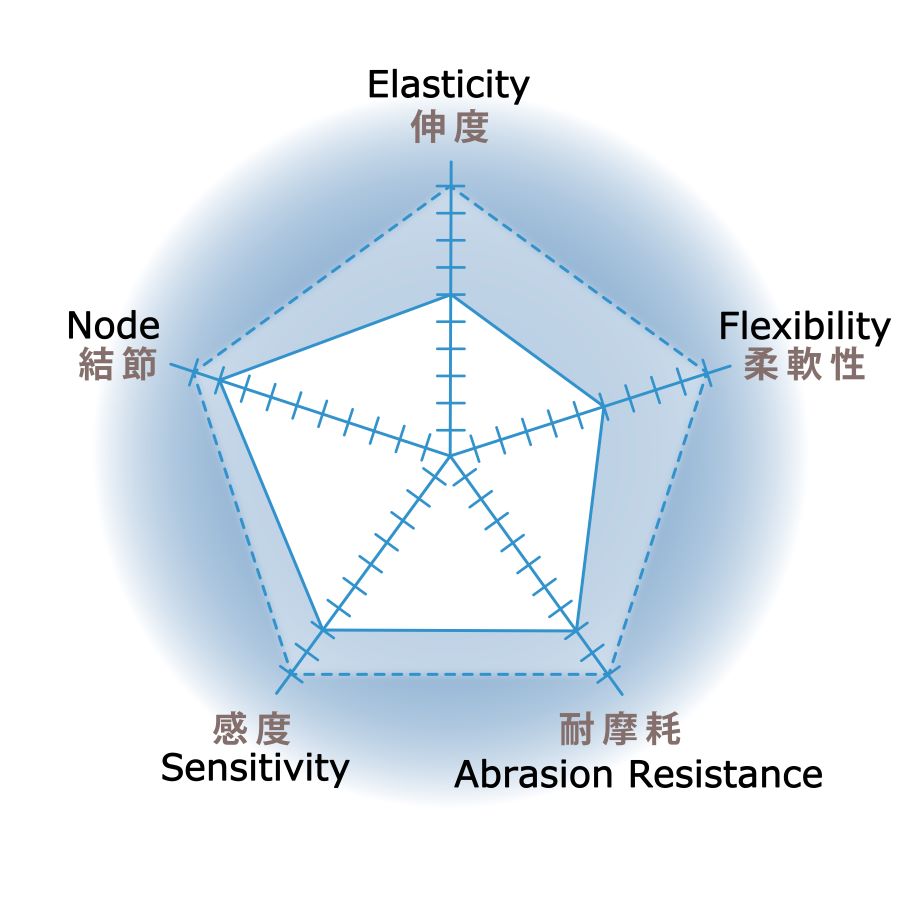
Color
Misty Purple



Spec
| # | LB. | DIA. (mm) | 30m (Parallel Winding) | 50m (Parallel Winding) |
| 8 | 35 | 0.470 | - | ● |
| 10 | 40 | 0.520 | - | ● |
| 12 | 50 | 0.570 | - | ● |
| 14 | 60 | 0.620 | - | ● |
| 18 | 70 | 0.700 | - | ● |
| 20 | 80 | 0.740 | - | ● |
| 22 | 90 | 0.780 | - | ● |
| 24 | 100 | 0.810 | - | ● |
| 30 | 120 | 0.910 | - | ● |
| 35 | 140 | 0.985 | - | ● |
| 40 | 150 | 1.050 | - | ● |
| 50 | 180 | 1.170 | - | ● |
| 60 | 220 | 1.280 | - | ● |
| 70 | 250 | 1.390 | - | ● |
| 80 | 300 | 1.480 | ● | - |
| 90 | 320 | 1.570 | ● | - |
| 100 | 370 | 1.660 | ● | - |
In search of the ideal shock leader
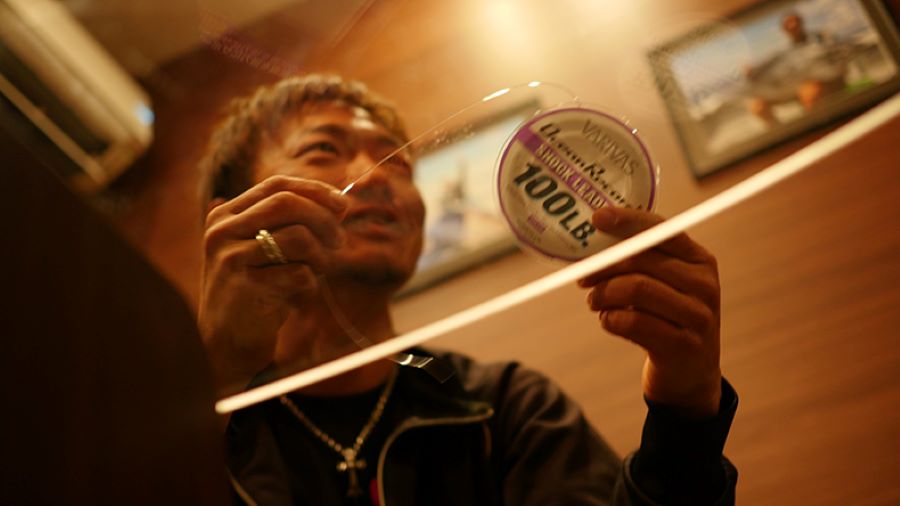
- In the development of the Ocean Record Shock Leader, we had the full cooperation of our main tester, Mr. Tashiro.
When VARIVAS approached me about testing and developing a shock leader, I took the test products that had been re-evaluated in terms of balance, and newly developed from raw materials and manufacturing processes.
It was a very honorable event.
It was my first time facing shock leaders so closely, and it was a valuable experience.
- We really wanted to ask Mr. Tashiro, who spends more time at sea than anyone else. How did the test products feel to you?
At first glance, the feel was generally good, with a smooth and supple surface.
There was a certain sense of reliability based on VARIVAS’s trustworthiness.
However, until I actually used it, I was skeptical.
For example, I tend to like softer leaders, but the softness of the line can change completely depending on the season.
What has improved, whether it can be used in practice, and whether it suits my preferences can only be determined by using it thoroughly.
As a captain, I can’t recommend something to my customers unless I truly trust it.
- Fundamentally speaking, what do you think constitutes an ideal shock leader, Mr. Tashiro?
If I were to list the elements that influence the nature of the line, they would be “tensile strength, abrasion resistance, softness, thickness, and color.”
Different people have different priorities and preferences.
An ideal shock leader would have high levels of each of these elements and also “good balance.”
For example, even if it’s very strong, it would be meaningless if it’s too hard to tie well, and the lure wouldn’t move properly.
It’s all about balance.
From that perspective, I can say that the Ocean Record Shock Leader is extremely close to the ideal leader.
Captain Tashiro’s Commitment as a Captain
- As a captain, in your unique environment, what perspective did you test from?
As a captain, guiding and being involved in numerous field situations, I often encounter scenes where the line used doesn’t match the situation.
And it does break.
It’s not just about the line; it’s regrettable when you can’t catch a fish due to the gear.
I’ve seen many such scenes.
As a captain, I have a strong desire for customers to definitely catch fish once they hit.
Since they’ve boarded my boat, I want to give as detailed advice as possible for them to catch fish.
For that, I first need to understand it myself.
What to recommend and what to advise on is very important to me.
That’s why I travel for guides and fish myself.
I only choose gear that I am truly satisfied with.
- Thank you.
You’ve recommended it to many customers based on your own experience and from the testing phase.
Let’s unravel the secrets of the Ocean Record Shock Leader, backed by numerous achievements.
New Color “Misty Purple”
- Firstly, how did you find the line color?
Compared to the conventional grayish color, this Misty Purple seems slightly less visible in the water.
Also, it’s simply a fresh color, isn’t it? It first attracts people.
They say purple is a color of desire, don’t they? It’s interesting to see it as something that satisfies anglers’ desires, isn’t it?
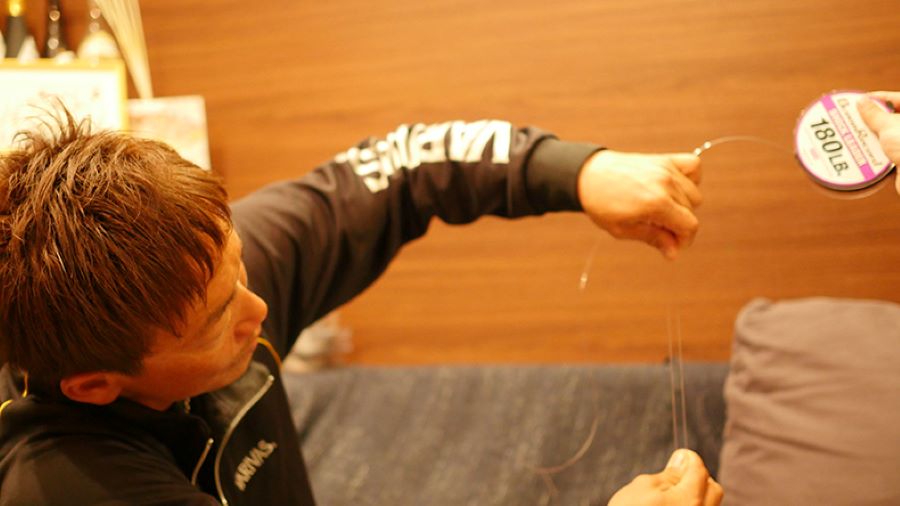
- Indeed, haha. By the way, how important is “invisibility”?
If the fish are highly active, line color doesn’t matter.
However, in low-activity and critical situations, it might matter.
It’s difficult to say exactly how different it is since you can’t catch the same fish in the exact same situation with different lines, but of course, it’s better to be less visible.
Another thing that stood out was how easily the line crimp disappeared.
There doesn’t seem to be any line crushing, perhaps related to its supple nature? With previous products, if the line had crimps, it often took quite a pull to remove them.
If the line has coil-shaped crimps, it sparkles underwater, which can make fish wary, something even tuna fishermen dislike.
The combination of the new color and the ease of removing line crimps makes it even less visible.
Changes with Line “Hardness”
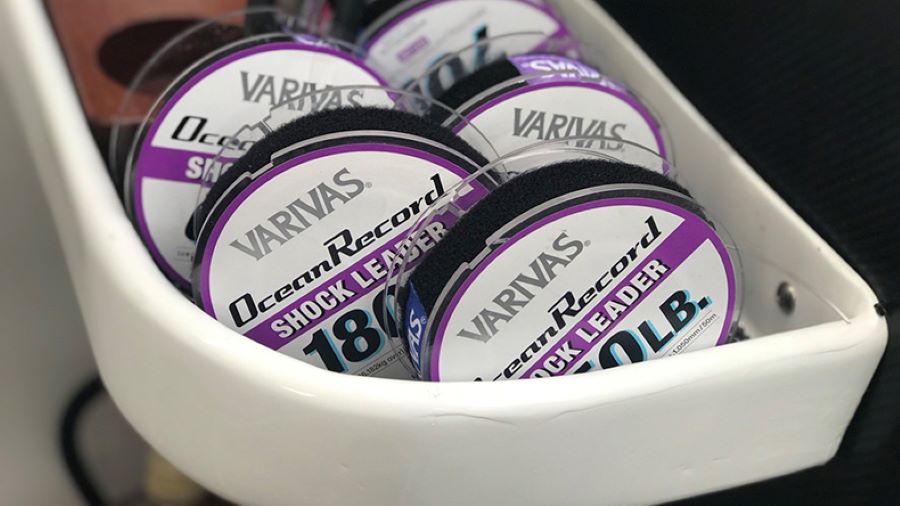
- The development aimed for “moderate suppleness,” how do you find it?
In conclusion, I think it’s achieved the ideal hardness. Generally, the hardness of the line’s surface and the suppleness of the line itself are proportional, but both are very good.
This relates to the overall balance, and “moderation” is crucial.
I personally prefer softer lines, but when the leader is moderately soft, the reliability of the line system increases significantly.
If the leader is too hard when tying an FG knot, it can slip, while if it’s too soft, it can break under pressure.
The Ocean Record Shock Leader might be slightly hard for some people, but I never have issues with my knot system.
With my way of tying FG knots, some may worry if it’s fully tightened, but when I wind it to a certain length, it never slips out.
For instance, with 8 PE line and a 140 LB leader, if I weave it 30 times, it becomes about 2.5 cm.
In this case, I tighten it until the color changes for about 2 cm, leaving about 5 mm of room for tightening. This room tightens gradually during the fight, preventing high breaks when unexpected tension occurs.
By the time the fish is coming up, it’s firmly tightened. In some cases, a moderately releasing drag can bring up the fish faster than a tightly set one.
Of course, this varies with field depth and how much line is out when hooked, so this method isn’t always the best.
- Interesting. Thinking as if you were the fish, I can somewhat understand. There was a request to make it slightly more supple during the testing phase.
You made it slightly softer, right? I think it achieved the ideal hardness.
Hardness and suppleness are essential for the line system and also significantly impact lure action.
Suppleness and line thickness directly reflect on lure action.
The Benefits of “Thinness”
- The keyword “line thickness” came up. The Ocean Record Shock Leader’s biggest feature is its tensile strength, which is one rank higher compared to the same gauge. This means it can be thinner while maintaining the same strength.
Exactly!
For example, if you say “this is a 100LB line,” people would be surprised at how thin it is.
The difference is so clear that it’s astonishing. The benefits of thinness are significant.
Thin means easier to tie, easier to move the lure cleanly, and less visible. It might also affect casting distance.
This enhances all the other features we’ve talked about.
Simply put, if you can attack with a 40 gauge instead of 50 gauge, it will definitely change things.
A clear example would be wanting to use a smaller lure because the bait is small, but the target fish is big.
Normally, you would use a thicker leader for the big fish, but a thick leader on a small lure ruins the action.
Thicker leaders are harder and create resistance, making it hard for the lure’s head to enter properly.
Conversely, the thinner and more supple the leader, the more it replicates the lure’s original movement.
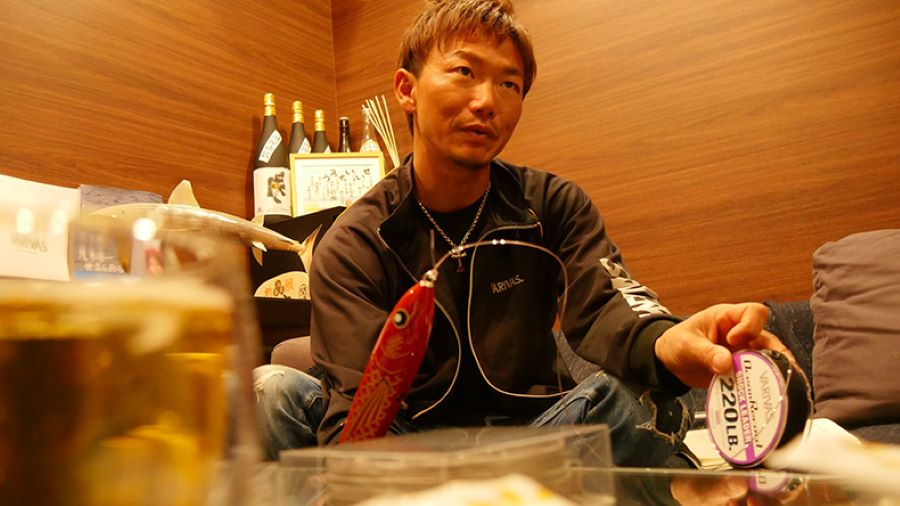
Like a Dual Structure. Nylon Line with a Core?
- Some people choose fluorocarbon leaders for abrasion resistance.
In higher gauges, fluorocarbon becomes hard and doesn’t settle well on spinning reels, making it difficult to use.
Most of my customers use nylon, and I’m not very familiar with fluorocarbon myself.
Fluorocarbon has higher abrasion resistance, right?
However, there have been many instances where I caught fish with the Ocean Record Shock Leader even after it was abraded or swallowed.
In testing, I pay close attention to these aspects, observing line marks on the fish and how the line moved during the fight.
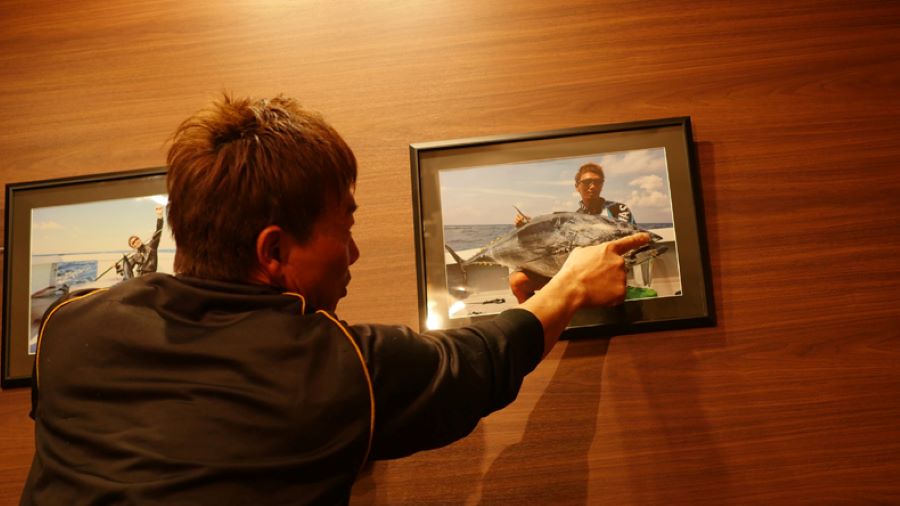
There have been many cases where the leader was swallowed by a 40kg tuna, hooked in the throat, and abraded by the teeth but still landed.
Similar experiences with amberjack and groupers have given me confidence.
Abrasion resistance would generally mean dealing with rock contact, but that’s covered by tensile strength.
In many cases, it’s better to quickly pull away from rocks with strong pulling.
- Actually, the Ocean Record Shock Leader uses a unique manufacturing method, making it soft on the surface but strong at the core.
That’s amazing! I recall a situation where it was really “rubbing” but didn’t break.
It’s a good visual, haha.
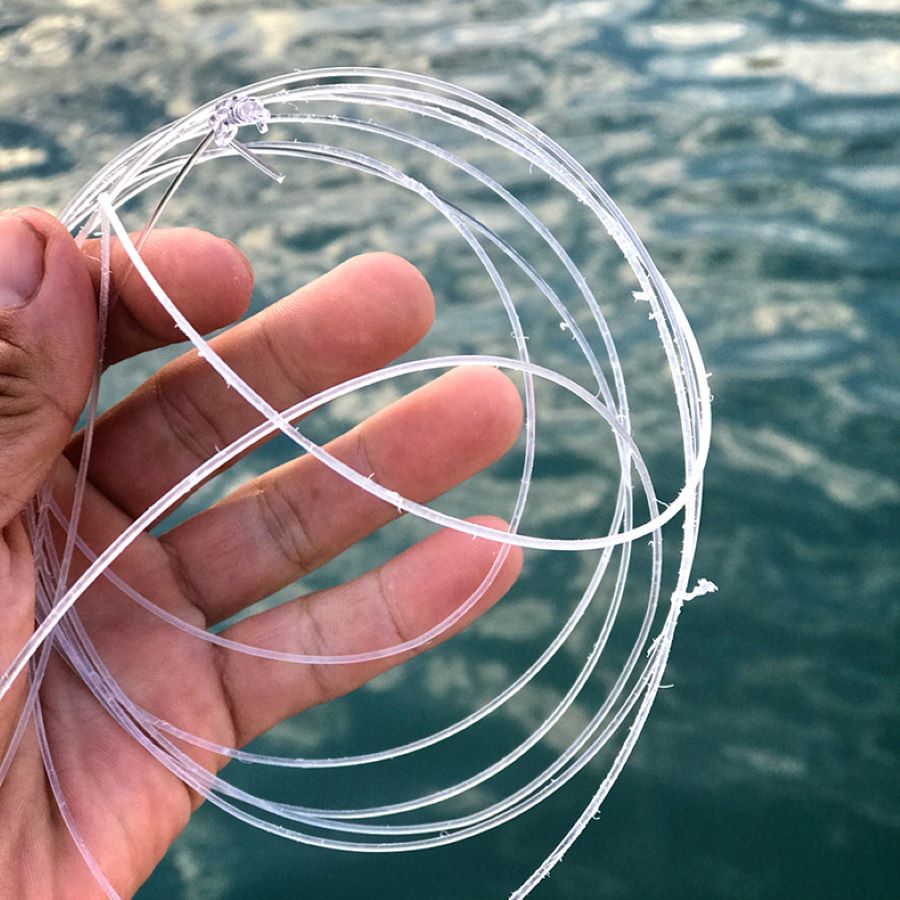
- Despite being a monofilament line, it acts almost like a dual structure.
Even if the surface gets worn, it holds up.
The unique balance of strength and suppleness in this leader is due to this manufacturing method.
Indeed.
During fights, you can sometimes feel the line on the fish’s teeth.
If the line is too soft, it gets cut between the teeth, but with the right tension, it slides over the teeth and doesn’t fall into the gaps.
It’s a subjective feeling, but I think its abrasion resistance is comparable to fluorocarbon.
I’ve had many experiences that make me believe this.
For me, what happens in front of my eyes is the ultimate proof.
Numerous Achievements Speak Louder than Words
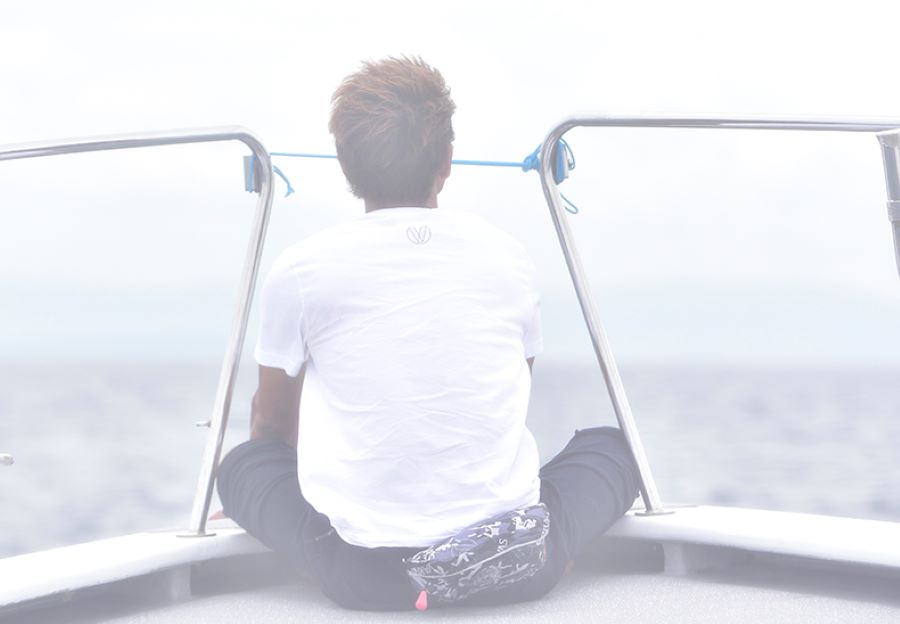
- The confidence comes from your own and your customers’ experiences. This is the best endorsement for us.
What I can say is that I’ve been out at sea more times than most, seen and felt it myself, chosen to use it, leading to both me and my customers catching big fish.
This is the most convincing, I think.
As a captain, I’ve confidently recommended it to give my customers a good fishing experience, backed by my own experiences and validations.
At this point, it’s undoubtedly the closest to the ultimate leader for me.
The reason for my confidence and reassurance lies in the unwavering experiences with the fish I’ve encountered and caught.
- Can you give us some specific achievements?
We’ve caught so many fish, haha.
Well, I have records by pound class, but for example, looking at the 100LB class, we’ve definitely caught over 20 tuna weighing between 30-50kg (including customers fishing with bait).
The maximum drag was around 13kg.
For amberjack, mainly with live bait, we’ve caught around 30 fish ranging from 5kg to 30kg.
Yellowtail is the most frequently caught, with the largest being 25kg, and definitely over 30 fish.
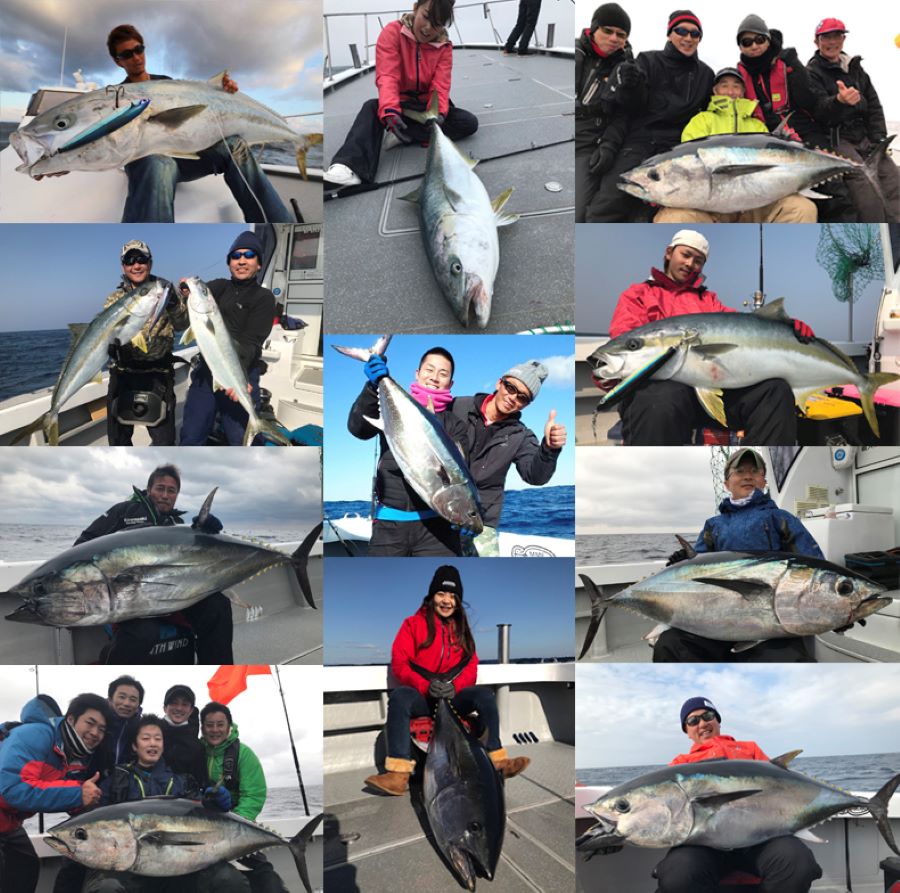
When it’s too bothersome to go into details, I just say, “Use this if you want to catch big fish,” haha.
This confidence is backed by my real-life experiences.
Someone once looked at the lineup of 35-370LB and said, “I can feel VARIVAS’s commitment.”
I’m planning to go to Canada to target tuna this year...
Should I try with 250LB? I’m a bit scared with just 220LB...

- The captain’s excited smile while planning resembled that of a boy eager for adventure, showing a moment when he reverted to being an angler.
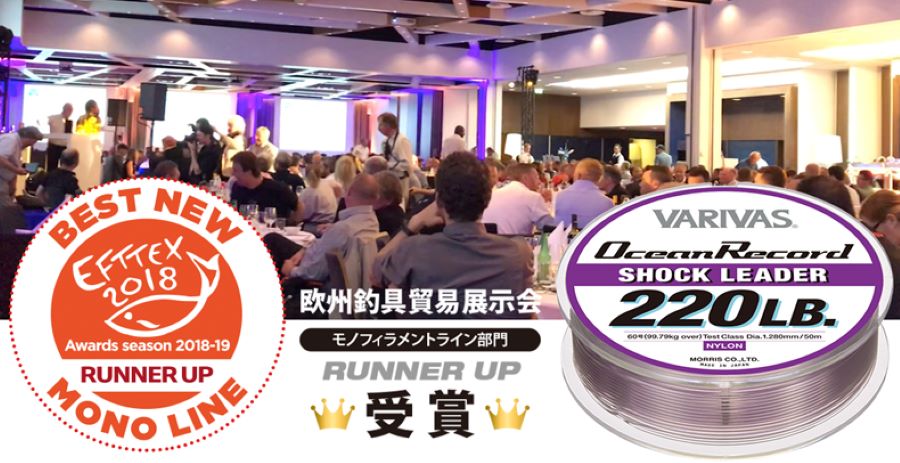
VARIVAS Quality Proven at EFTTEX Contest
VARIVAS’s Ocean Record Shock Leader was awarded at the “EFTTEX 2018 BEST NEW PRODUCT AWARD,” a new product contest held at the European Fishing Tackle Trade Exhibition (EFTTEX), where fishing tackle manufacturers and wholesalers from around the world gather.
The evaluation criteria included “revolutionary, convenience, design, quality, practicality, and added value.”
Once again, VARIVAS products’ quality has been proven.
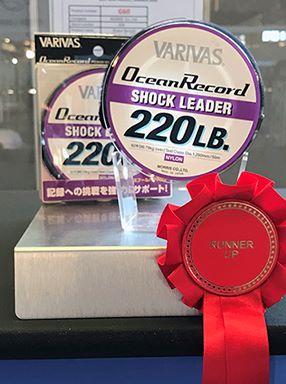
Gallery
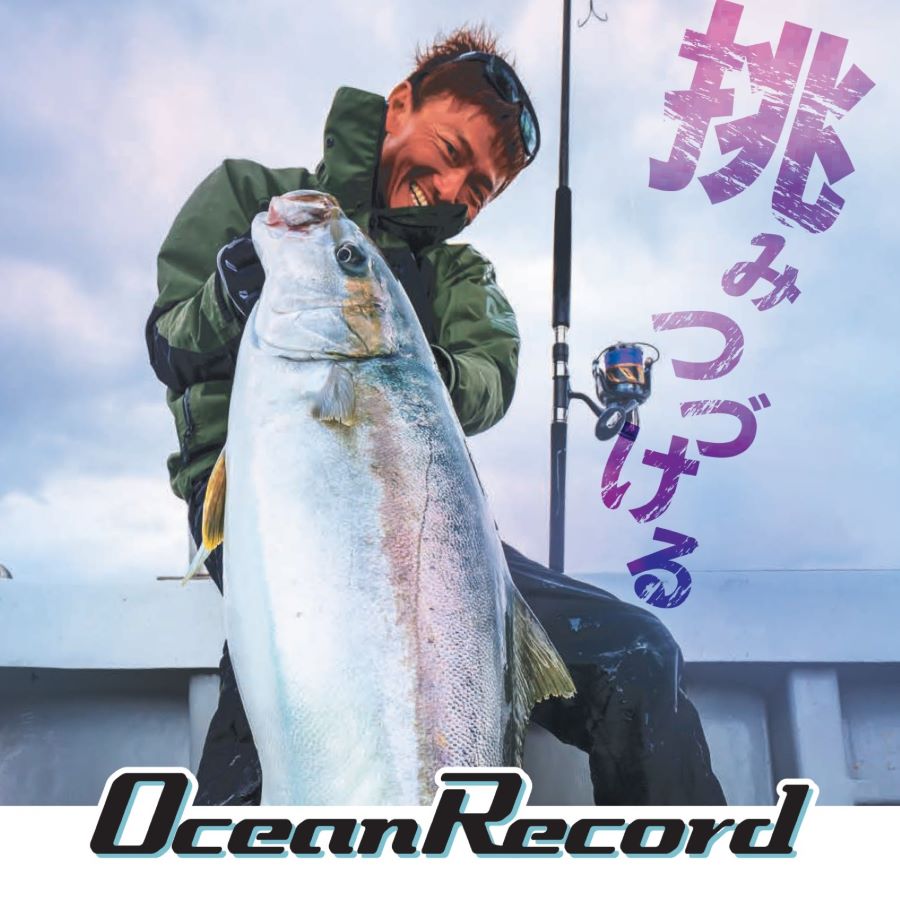
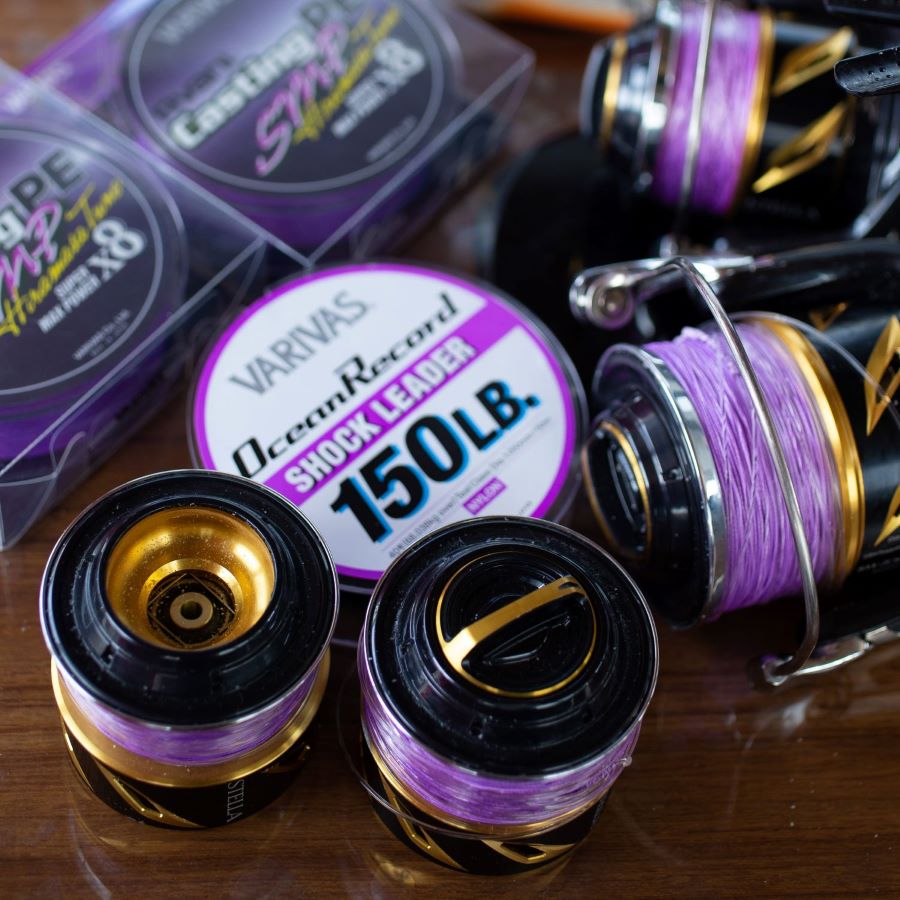
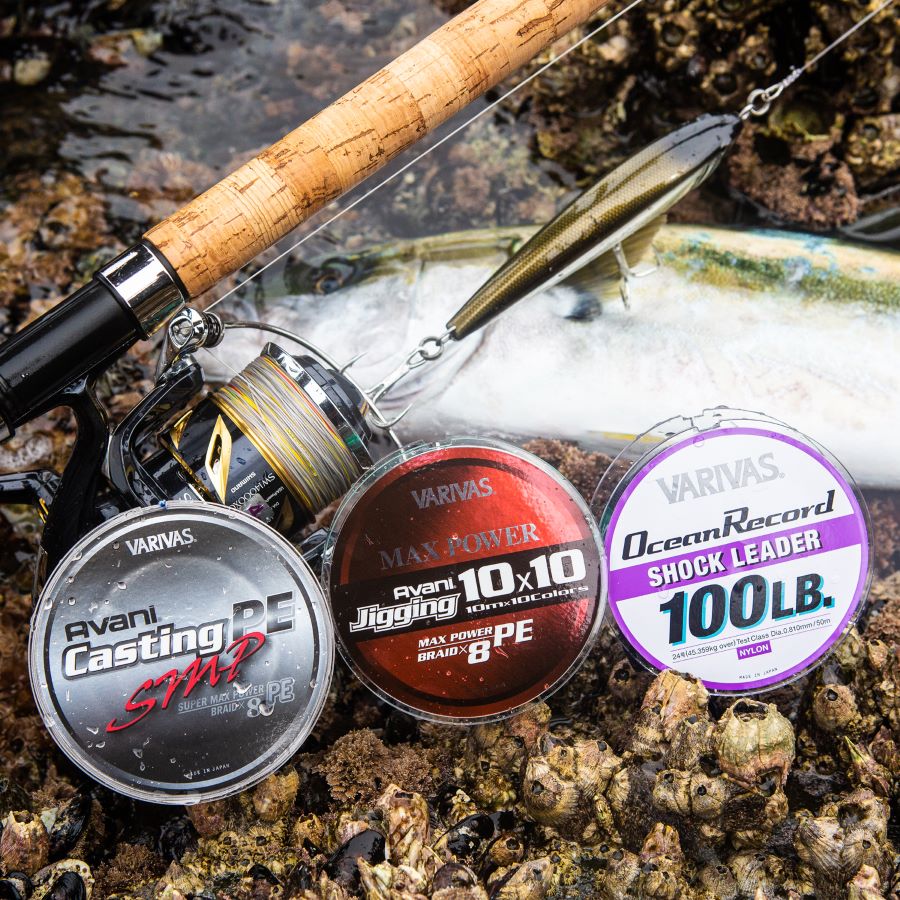
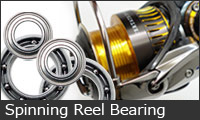
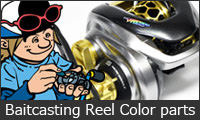
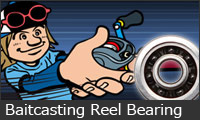





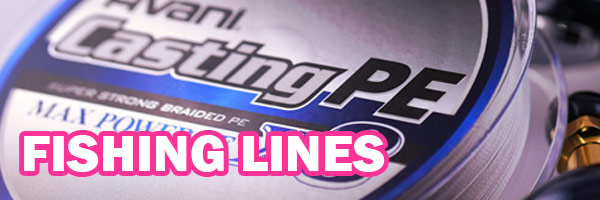




























































































 Baitcasting Reel
Baitcasting Reel
































































































![Photo1: [VARIVAS] Ocean Record SHOCK LEADER VA-21](https://www.hedgehog-studio.co.jp/data/hedgehog-studio/_/70726f647563742f32303234303531305f6433363561662e6a7067003330300000660066.jpg)